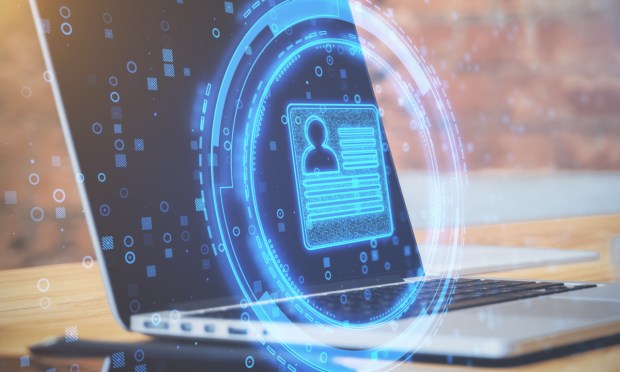Digital Identity Becomes New Currency as Companies Turn IDs into Payments Credentials

As the payments ecosystem continues to evolve, it is missing just one key element.
That element? A single source of truth in the form of a dynamic digital identity that can navigate multiple commerce contexts and support real-time interoperability.
This, as the European Union (EU) on Wednesday (Nov. 8) reached a final agreement on establishing a digital identity wallet for EU citizens that would allow for, among other things, the digital identity wallet to be used for payments.
“Very Large Online Platforms designated under the Digital Services Act (including services such as Amazon, Booking.com or Facebook) and private services that are legally required to authenticate their users will have to accept the EU Digital Identity Wallet for logging into their online services,” the EU wrote in a release.
The final agreement must still be formally approved by both the European Parliament and the Council of the EU. Pending approval, the digital identity wallet will become available to the EU member nation citizens after two years.
The strategic imperative of digital identity layers is the linchpin for unlocking unprecedented opportunities in personalization, financial inclusion, transaction security and global connectivity.
That’s because, as users and enterprises increasingly engage with various future-fit financial services, the ability to seamlessly authenticate their identities allows for a more customized and user-centric approach that doesn’t sacrifice security for convenience.
Read also: Unmasking Digital Imposters Is Rising Priority for Industrial Economy
Digital Identity Layers Mark a Payments Paradigm Shift
While the rise of ever-faster digital payment methods has accelerated the sophistication of money movement for both businesses and individuals, what has stayed the same is the need for businesses to provide their customers with the payment methods they prefer and ensuring those channels stay secure.
Digital identity innovations, whether via tokenization or through a digital wallet, aim to provide the foundational technology that will allow governments and authoritative issuers, including platforms, wallet providers and identity vendors, to create secure digital identities that can be used across various digital use cases.
“We never really thought about, what does it mean to identify a person on the internet in a way that is portable and doesn’t require you to rely on a single private platform,” Mike Brock, CEO of TBD, a business from Block focused on open-source decentralized technologies, told PYMNTS.
“Through the lens of competitiveness, when you think about building a new service today you are under a lot of pressure to create an onboarding flow that allows you to sign in with Google, with Apple, with Facebook … and this means that those platforms are intermediating your customer relationships,” he added.
But as the world transitions away from physical identity documents like passports and drivers’ licenses to digital versions of these authentication hallmarks, identity is evolving from a static attribute to a dynamically digital currency that unlocks new dimensions of possibility.
Already the broader marketplace is reacting to, and embracing, the digital identity opportunity.
Samsung last month (Oct. 5) partnered with global identity technologies provider IDEMIA to bring mobile driver’s licenses and state IDs to Samsung Wallet; and the U.S. Department of Homeland Security has a pilot program for issuing digital green cards and potentially digital credentials for airports.
Read more: Combating Online Fraud With Digital Identification
Solving for Interoperability’s Identity Hurdle
Digital identity layers create a unified language for identity verification and can create a standardized foundation able to be leveraged to optimize historically challenging payment contexts, including cross-border transactions and healthcare payments.
“To have all of this in one place is what’s going to continue to allow that tie-in of payments, identity and passes … so that everything you need to do…is easier and safer,” Jenny Cheng, vice president and general manager of Google Wallet, told PYMNTS.
When it comes to helping bridge the healthcare sector’s legacy silos and data fragmentation, the role that digital identity can play can’t be overstated.
“Until we have unique patient identification, being able to connect all these different systems together and share information seamlessly is such a challenge. [Users] don’t want to have to bounce around and log in and authenticate via the creation of different IDs across different marketplaces and apps,” Markus Waite, president of Empara, told PYMNTS.
Solving for interoperability also puts the onus on solving for security across various payment and authentication domains.
“With the world that we live in, digital identities are becoming more used than physical driver’s licenses or physical passports,” Erika Dietrich, VP, Global Fraud Prevention Risk Services at ACI Worldwide, told PYMNTS, adding that, “[Businesses] need to deploy cyberdefense strategies that can not only detect and prevent fraud but also enable them to authenticate and verify consumers’ digital identities in real time, protecting against account takeovers, while seamlessly integrating any updates to their account.”
PYMNTS Intelligence in “Combating Online Fraud With Digital Identification,” a PYMNTS and Prove collaboration, and part of the Digital Identity Tracker® Series found that security is highly important for 83% of consumers, while 53% say consistent experiences across different platforms have a very or extremely big impact on their trust in financial institutions. These sentiments are shared by regulators, who are increasingly issuing guidelines for uses of authentication technology.
